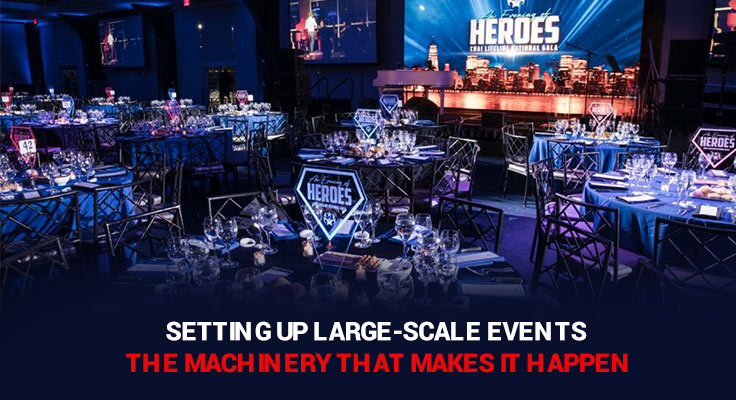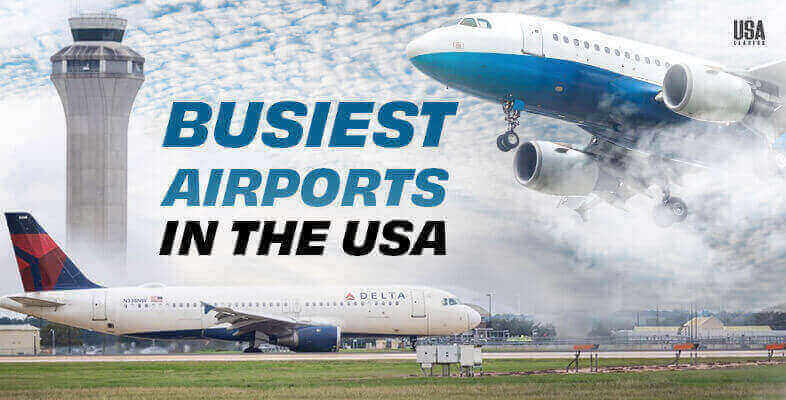Planning a big event is no easy task. You have to prepare for thousands of people attending the festival, trade show, concert or business convention. They need ample space, security, internet, food and bathrooms.
So, it’s no wonder that these events depend on a well-tuned system of people, tools, and procedures.
A whole ecosystem keeps everything going smoothly in the background. For example, a cherry picker is used for installing overhead lighting, banners, and decorations at large-scale event venues.
Let’s look at the literal and metaphorical machinery that makes these massive gatherings possible.
Logistics: The Backbone of Success
How do you simultaneously move mountains of equipment, supplies, and people? That’s where logistics come into play. To guarantee that everything arrives on time, large-scale events necessitate careful scheduling, transportation, and storage coordination.
- Transportation and Freight
The larger the event, the larger the load, whether it’s a concert stage or trade show exhibit booths. Trucks, cargo planes, and even shipping containers are used by freight businesses that specialise in event logistics to transport equipment across national or even international borders. It’s all about timing. Freight delays might cause last-minute scrambles and ruin the setup procedure.
- On-Site Coordination
Everything doesn’t just show up in the proper place when it gets there. When teams are working under pressure, heavy equipment is frequently moved and positioned using forklifts, pallet jacks, and cranes. Chaos can be avoided by planning who does what and when.
Infrastructure: Building Temporary Cities
Have you ever thought about what it takes to host a concert for 50,000 people in an empty field? Bathrooms, electricity, internet access, and sound systems all have to be brought in. These aren’t minor details; they’re deal-breakers if done poorly.
- Power and Lighting
Mobile generators are the unsung heroes here, providing power for lighting, sound equipment, kitchen setups, and more. Technicians are on standby throughout events to troubleshoot and reduce downtime if something goes wrong.
- Internet Connectivity
emporary events often rely on customized setups like portable cell towers or satellite connections. For trade shows or live-streamed concerts, robust internet access is a necessity.
- Porta Potties and Showers
Modern porta potties can include handwashing stations, air conditioning, and even flushing capabilities to keep guests comfortable.
Crowd Control: Keeping Thousands Safe
Managing a crowd of thousands is like directing a river. If you don’t plan for it, things can quickly go from organized to overwhelming.
- Security and Entry Management
Specialised software can help streamline check-in processes, ensuring everyone who enters has legitimate access while keeping wait times minimal. For hazardous scenarios, such as sudden weather issues, evacuation plans must be laid out in advance.
- Barriers and Flow Control
Metal barricades, rope dividers, and even signage help direct the flow of foot traffic. Strategically placed security personnel ensure restricted areas stay that way. A road roller comes in handy for clearing the way and settling gravel so you can create sidewalks, wheelchair ramps and cargo ramps.
- Medical Services
Emergencies happen, and large events are no exception. Organizers must have medical staff on-site, first-aid stations and clear ways to communicate in an emergency. Responsibility here is non-negotiable, as it’s about keeping people safe.
Technology: The Digital Heartbeat
Technology drives nearly every aspect of the event experience, beyond just delivering power or connectivity.
- Ticketing and Registration Software
Gone are the days of paper tickets only. Advanced ticketing systems not only track attendance but also offer insights into sales and demographics. Some systems even integrate directly into wearable tech for cashless transactions or fast check-ins.
- Audio-Visual Equipment
For concerts, state-of-the-art PA systems and LED walls deliver the experience fans expect. In conferences, projectors, screens, and microphones guarantee that messaging lands effectively.
- Event Apps
Custom apps are becoming standard for large events, allowing attendees to get maps, updates, and schedules right on their phones. Some apps even offer networking tools, helping users connect with others before they’ve even set foot on-site.
Sustainability: The New Standard
Sustainability is no longer an afterthought. It’s a vital part of planning and offers long-term benefits for event organisers and attendees.
Waste Management
Recycling programs, compost stations, and reusable vendor supplies are becoming more common. The goal is to leave the venue cleaner than it was found.
Green Power Options
Some events are switching to solar-powered stages and energy-efficient lighting to reduce their carbon footprints. Locally sourcing materials or vendors also cuts transportation emissions.
Final Thoughts: A Symphony of Moving Parts
Large-scale events that go well are not random occurrences. They need weeks or even months of planning, with thought given to every possible outcome. Everything has to work together, from the trucks that bring in the tools to the jaw crusher that breaks bigger pieces into smaller ones for use in asphalt and laying down tar.
Think about the work that went into putting on a festival, conference, or show the next time you’re there. Not only are there lights and sounds, but also a group of people, technology, and tools working together to make a memorable experience.
Also Read: How to Organize Large-Scale Business Events





















